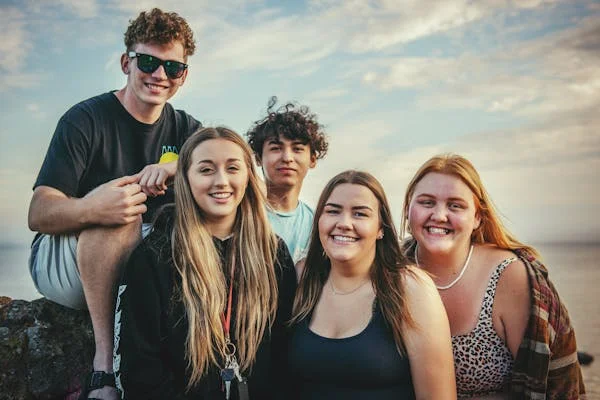Fashion and lifestyle photography is an art form that has evolved over the years, shaping the way we see and experience both fashion and everyday life. From glossy magazine covers to Instagram influencers, this genre captures the essence of beauty, personality, and style. Whether you’re a seasoned professional or just beginning your journey, understanding the art of fashion and lifestyle photography can help you capture that perfect shot every time.
Understanding Fashion and Lifestyle Photography
Fashion and lifestyle photography combines two distinct styles: one rooted in the latest trends and aesthetics of the fashion world, and the other focused on real-life moments and experiences. Fashion photography often involves highly stylized setups, extravagant outfits, and intricate compositions, while lifestyle photography brings a more natural, candid vibe, emphasizing authenticity and storytelling.
Both genres, however, share a common goal: to visually communicate a narrative through the lens. In fashion photography, the emphasis is on showcasing clothing and accessories in the most flattering way. In lifestyle photography, the focus shifts to capturing individuals in their most authentic, natural settings whether it’s a family enjoying a day at the park or a couple having dinner at a chic restaurant.
To explore how professionals master fashion aesthetics, read this insightful piece by Vogue on the art of fashion photography.
Essential Elements for Capturing the Perfect Shot
To master fashion and lifestyle photography, there are several key elements to keep in mind. These elements help create images that are both visually stunning and emotionally engaging.
1. Lighting is Key
Lighting is the foundation of any great photograph, but it’s especially crucial in fashion and lifestyle photography. The right lighting can transform an image from mundane to extraordinary, highlighting the details of a subject or creating the perfect mood.
In fashion photography, high-fashion looks often require soft, diffused lighting that emphasizes texture, fabric, and the overall design of the outfit. On the other hand, lifestyle photography tends to favor natural light, such as golden hour or the soft, even light on overcast days, to create a more genuine and warm feel.
2. Composition and Framing
The way you compose your shots will make or break your fashion and lifestyle photography. A well-composed image draws the viewer’s eye to the most important elements, whether it’s the model, the outfit, or the scene. In fashion photography, composition might involve dynamic angles, such as shooting from above or below to make a subject appear taller or more dramatic. In lifestyle photography, it’s about capturing the moment in a way that feels natural and unstaged, ensuring that the scene conveys a sense of authenticity.
3. The Role of the Model
A good model can bring life to a fashion shoot, while a relaxed, comfortable individual can make a lifestyle shot shine. The model’s body language, expressions, and ability to convey emotion play a huge role in the success of a fashion or lifestyle photograph. In fashion, striking poses and attention to detail are key. In lifestyle photography, however, a more relaxed and candid approach is often preferred. It’s essential to make the model or subject feel at ease to capture the most natural, flattering moments.
4. Styling and Wardrobe
The styling and wardrobe choices are incredibly important in fashion and lifestyle photography, but they differ depending on the context. In fashion photography, the outfits need to be the focal point of the shoot. This means choosing clothing that works well with the model’s features and the overall aesthetic of the shoot. For lifestyle photography, clothing and styling should complement the natural setting, ensuring the look feels effortless and aligned with the story you’re trying to tell.
A well-curated wardrobe also enhances the connection between the subject and the viewer. If you’re capturing a lifestyle scene, for instance, a family in casual clothing might evoke a sense of comfort and relaxation, while high-end fashion choices might tell a different story.
5. Post-Production: Enhancing the Shot
While getting the perfect shot in-camera is crucial, post-production plays an essential role in refining your images. Editing allows you to enhance the colors, sharpen details, and bring out the best in your subjects. Fashion and lifestyle photography often benefit from a clean, polished look, but don’t over-edit the image keeping the subject’s natural features is key to retaining authenticity.
For lifestyle photography, you might want to keep things more organic by adjusting the colors and shadows without making the image look too staged. In contrast, fashion photography might involve heavy retouching to enhance skin textures or to make the clothing pop more vividly.
You can also find practical editing tips in this Adobe guide to fashion and lifestyle photography.
Building a Portfolio in Fashion and Lifestyle Photography
Building a strong portfolio is essential for anyone wanting to make a career in fashion and lifestyle photography. A well-curated collection of work can demonstrate your ability to capture both high-fashion looks and candid, relatable moments. Over time, try to work on various projects and experiment with different styles to refine your unique approach. Collaboration with models, stylists, and makeup artists will also help you develop a diverse set of images that showcase your versatility.
The Growing Influence of Social Media
In the modern world, social media platforms like Instagram have become a dominant force in fashion and lifestyle photography. The ease of sharing photos online allows photographers to reach a wide audience and gain recognition for their work. Many up-and-coming photographers are finding success by showcasing their work on these platforms, gaining followers and attracting clients.
When sharing your work on social media, it’s important to maintain a consistent style and aesthetic. A cohesive feed that highlights your strengths in both fashion and lifestyle photography can help you build a personal brand and attract clients who appreciate your approach.
Final Thoughts: Capturing the Perfect Shot
In the end, fashion and lifestyle photography is about more than just technical skill; it’s about connecting with your subject and telling a story through your lens. Whether you’re working on a glamorous fashion editorial or capturing the beauty of everyday moments, each shot offers a unique opportunity to create something that resonates with your audience. Fashion and lifestyle photography is an ongoing journey of experimentation and learning. By paying attention to lighting, composition, styling, and post-production, you can hone your craft and continue to capture images that stand the test of time. So, are you ready to take the perfect shot and elevate your photography to the next level?





